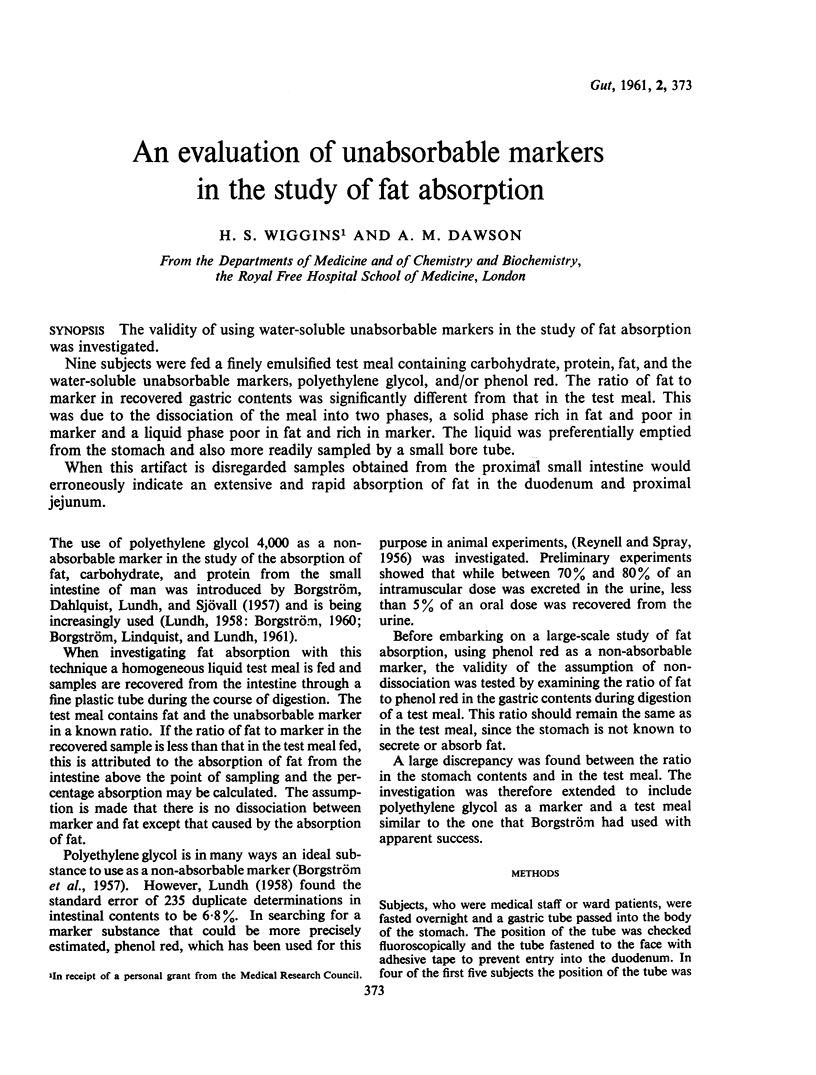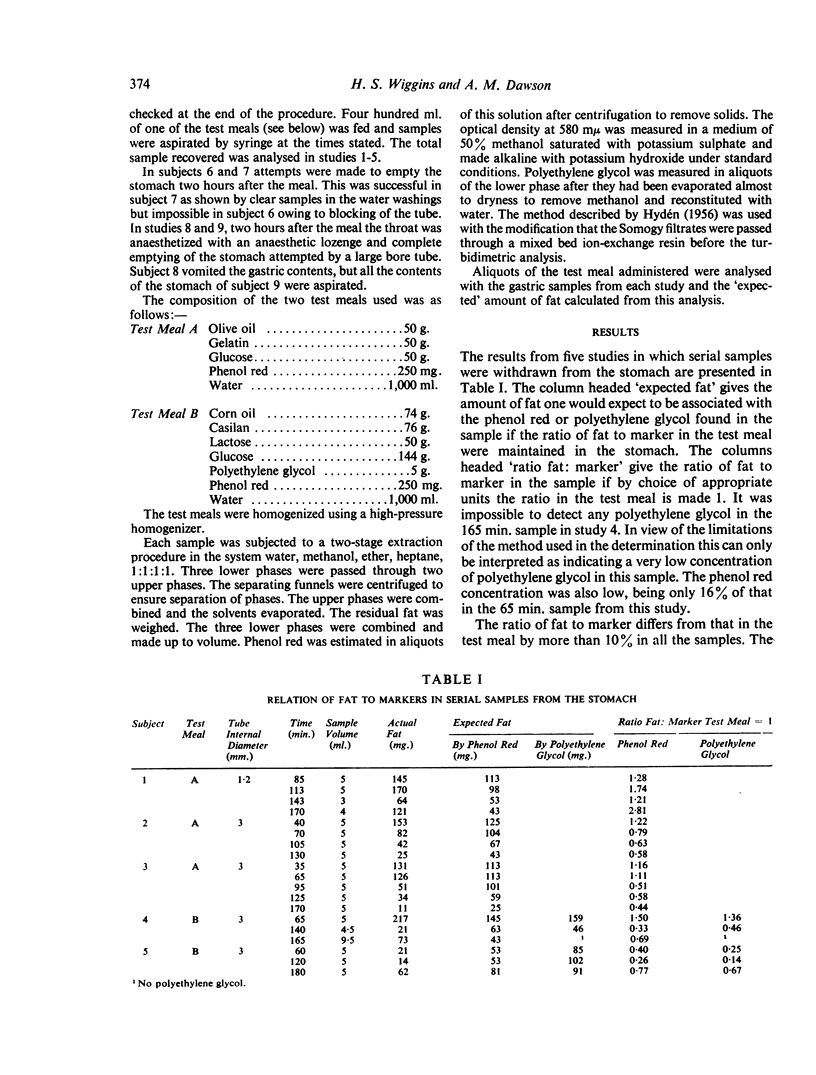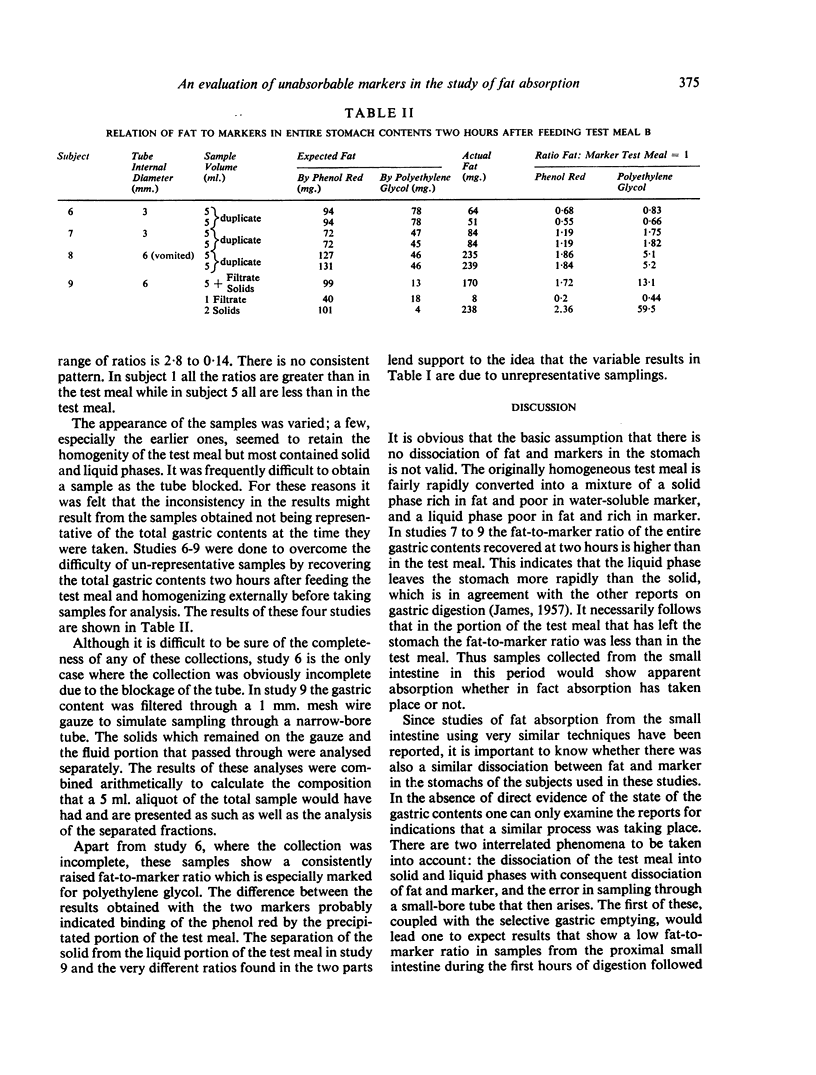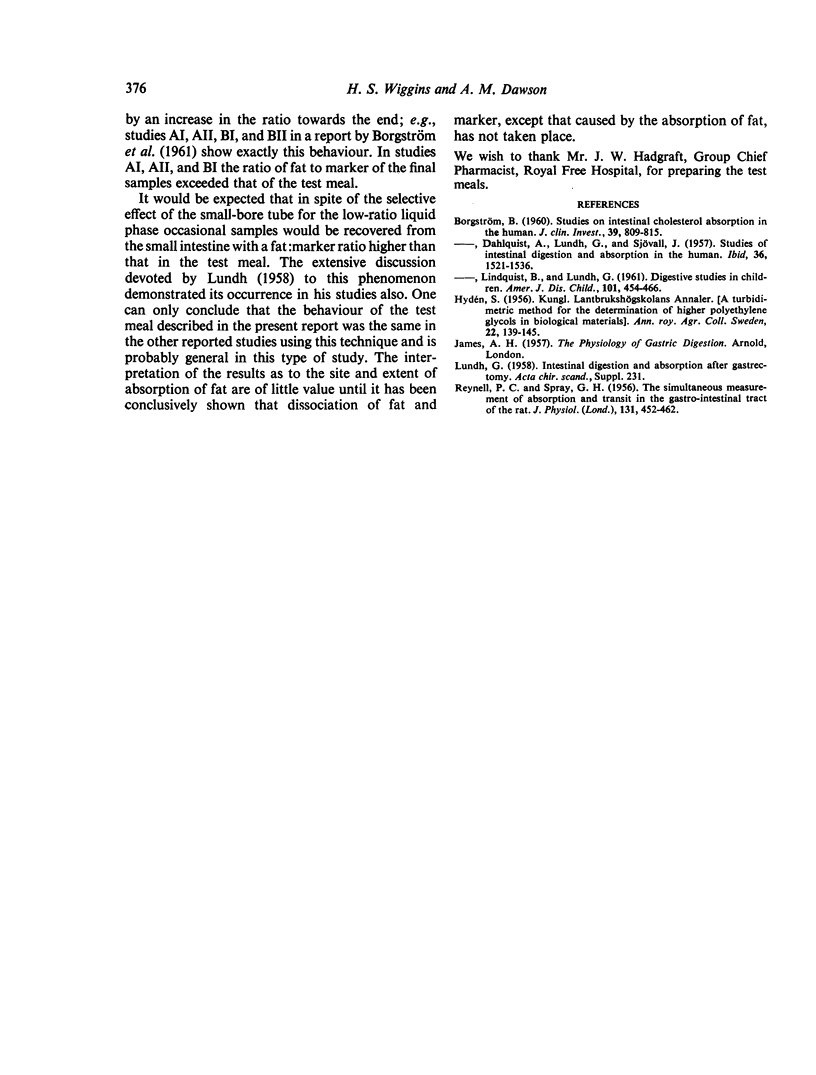Abstract
The validity of using water-soluble unabsorbable markers in the study of fat absorption was investigated.
Nine subjects were fed a finely emulsified test meal containing carbohydrate, protein, fat, and the water-soluble unabsorbable markers, polyethylene glycol, and/or phenol red. The ratio of fat to marker in recovered gastric contents was significantly different from that in the test meal. This was due to the dissociation of the meal into two phases, a solid phase rich in fat and poor in marker and a liquid phase poor in fat and rich in marker. The liquid was preferentially emptied from the stomach and also more readily sampled by a small bore tube.
When this artifact is disregarded samples obtained from the proximal small intestine would erroneously indicate an extensive and rapid absorption of fat in the duodenum and proximal jejunum.
Full text
PDF



Selected References
These references are in PubMed. This may not be the complete list of references from this article.
- BORGSTROM B., DAHLQVIST A., LUNDH G., SJOVALL J. Studies of intestinal digestion and absorption in the human. J Clin Invest. 1957 Oct;36(10):1521–1536. doi: 10.1172/JCI103549. [DOI] [PMC free article] [PubMed] [Google Scholar]
- BORGSTROM B. Studies on intestinal cholesterol absorption in the human. J Clin Invest. 1960 Jun;39:809–815. doi: 10.1172/JCI104100. [DOI] [PMC free article] [PubMed] [Google Scholar]
- REYNELL P. C., SPRAY G. H. The simultaneous measurement of absorption and transit in the gastro-intestinal tract of the rat. J Physiol. 1956 Feb 28;131(2):452–462. doi: 10.1113/jphysiol.1956.sp005474. [DOI] [PMC free article] [PubMed] [Google Scholar]


